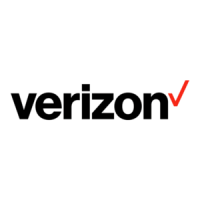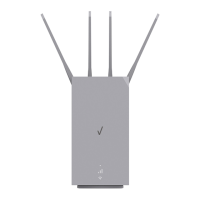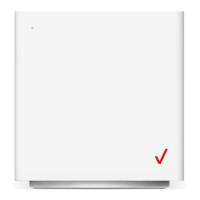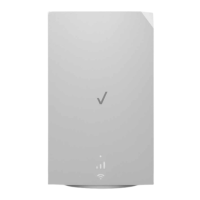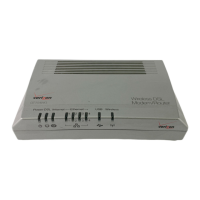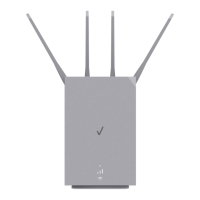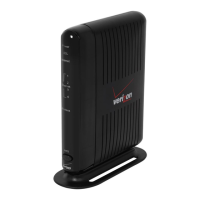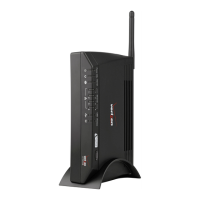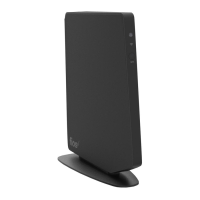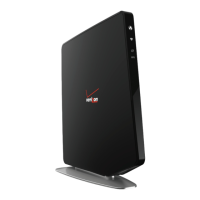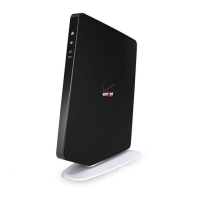Do you have a question about the Verizon ASK-NCQ1338 and is the answer not in the manual?
Guidelines for optimal wireless signal transmission from the router to network devices.
System requirements for configuring the wireless network via computer.
Steps to power up the router and establish a LTE/5G connection.
Instructions for connecting and logging into the router using a mobile device.
Instructions for connecting and logging into the router using a computer.
Overview of network status and key system information displayed on the Home page.
Advanced settings for router's Wi-Fi, including dual-band frequencies and WPS.
Configuration of basic Wi-Fi settings, including Band Steering and SSID.
Advanced settings for 2.4GHz or 5GHz bands, including channel and WMM settings.
Setup of additional 'Guest' Wi-Fi networks for temporary access.
Displays statistics and information about connected network devices.
Easy method to add supported Wi-Fi devices to your network using Wi-Fi Protected Setup.
Feature to restrict Internet access to selected devices at specified times.
Provides quick links to networking functions like Network Map, Status, and Cellular data.
Visual overview and status of network and connected devices.
Displays network status across categories like Internet, LTE, LAN, and Wireless.
Displays network data usage, including upload and download for monthly and current periods.
Cellular settings, including connection and SIM status.
Configuration of the router on your Local Area Network (LAN).
Settings to enable or disable IPv6 connectivity.
Displays all devices (clients) connected to the router.
Administrative functions like login password, date/time, backup, and firmware.
Allows changing the login password for the router's Web UI for security.
Settings for router's date and time, automatically configured over the cellular network.
Save/backup router settings or restore to previously saved configurations.
Displays router's firmware version and allows checking for new updates.
Information about open source licenses and source code availability.
Run Ping & Traceroute diagnostic tests with the router.
Configure security functions like Firewall, IP/MAC Binding, and Access Control.
Built-in firewall for protection against unauthorized intrusions from the Internet.
Reserve static IP addresses for devices by binding them to MAC addresses.
Prevent unauthorized users by defining permitted (whitelist) or denied (blacklist) devices.
Improve network performance and security with Network Address Translation (NAT) Forwarding.
Isolated network area for computers outside the firewall receiving Internet traffic.
Networking protocols enabling devices to communicate and establish working configurations.
Application Level Gateway settings to resolve service disruptions caused by the firewall.
Set up internet services on local computers without exposing them directly to the internet.
Manage and prioritize bandwidth efficiently for applications and network devices.
Guidelines for optimal wireless signal transmission from the router to network devices.
System requirements for configuring the wireless network via computer.
Steps to power up the router and establish a LTE/5G connection.
Instructions for connecting and logging into the router using a mobile device.
Instructions for connecting and logging into the router using a computer.
Overview of network status and key system information displayed on the Home page.
Advanced settings for router's Wi-Fi, including dual-band frequencies and WPS.
Configuration of basic Wi-Fi settings, including Band Steering and SSID.
Advanced settings for 2.4GHz or 5GHz bands, including channel and WMM settings.
Setup of additional 'Guest' Wi-Fi networks for temporary access.
Displays statistics and information about connected network devices.
Easy method to add supported Wi-Fi devices to your network using Wi-Fi Protected Setup.
Feature to restrict Internet access to selected devices at specified times.
Provides quick links to networking functions like Network Map, Status, and Cellular data.
Visual overview and status of network and connected devices.
Displays network status across categories like Internet, LTE, LAN, and Wireless.
Displays network data usage, including upload and download for monthly and current periods.
Cellular settings, including connection and SIM status.
Configuration of the router on your Local Area Network (LAN).
Settings to enable or disable IPv6 connectivity.
Displays all devices (clients) connected to the router.
Administrative functions like login password, date/time, backup, and firmware.
Allows changing the login password for the router's Web UI for security.
Settings for router's date and time, automatically configured over the cellular network.
Save/backup router settings or restore to previously saved configurations.
Displays router's firmware version and allows checking for new updates.
Information about open source licenses and source code availability.
Run Ping & Traceroute diagnostic tests with the router.
Configure security functions like Firewall, IP/MAC Binding, and Access Control.
Built-in firewall for protection against unauthorized intrusions from the Internet.
Reserve static IP addresses for devices by binding them to MAC addresses.
Prevent unauthorized users by defining permitted (whitelist) or denied (blacklist) devices.
Improve network performance and security with Network Address Translation (NAT) Forwarding.
Isolated network area for computers outside the firewall receiving Internet traffic.
Networking protocols enabling devices to communicate and establish working configurations.
Application Level Gateway settings to resolve service disruptions caused by the firewall.
Set up internet services on local computers without exposing them directly to the internet.
Manage and prioritize bandwidth efficiently for applications and network devices.
